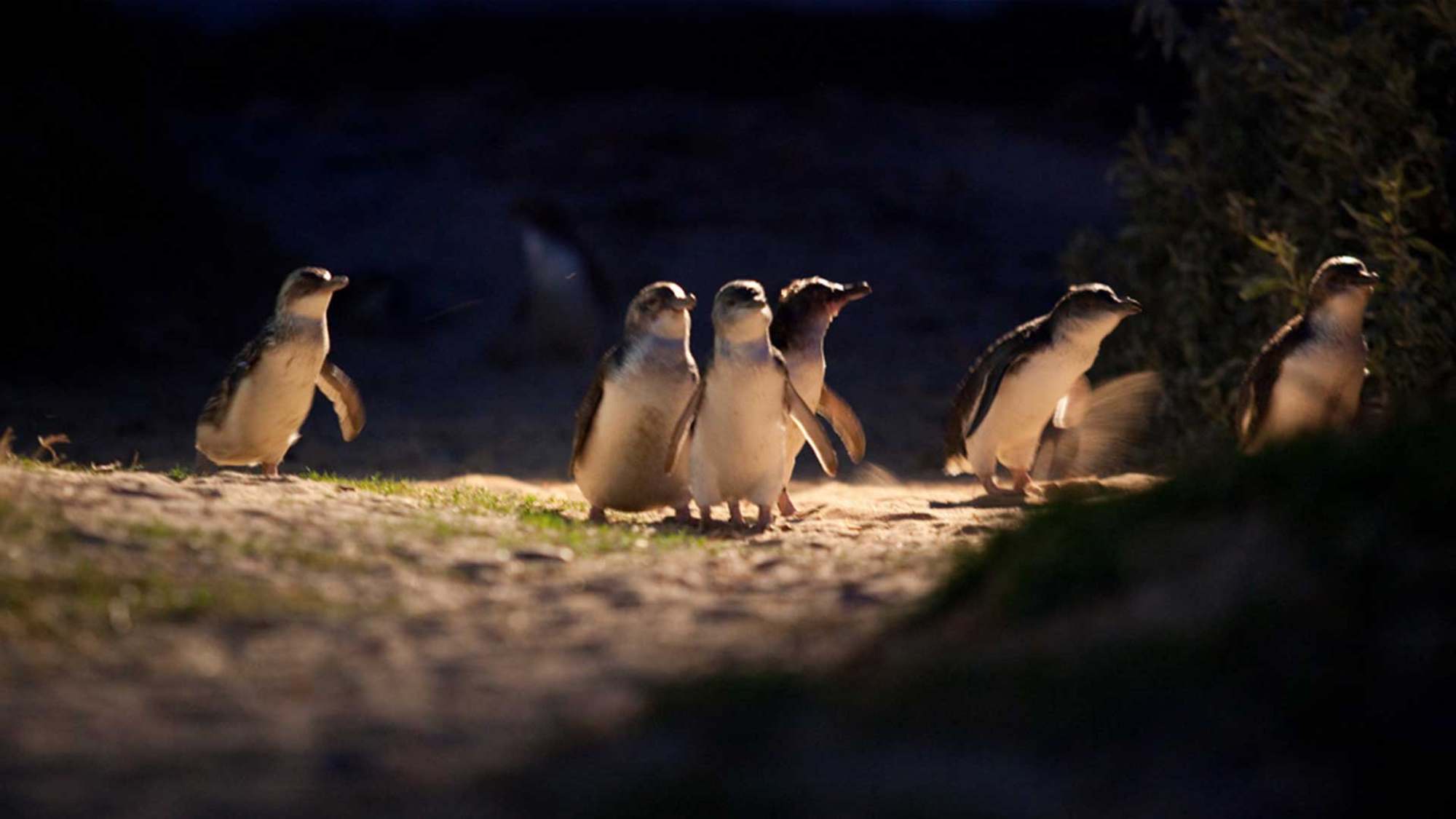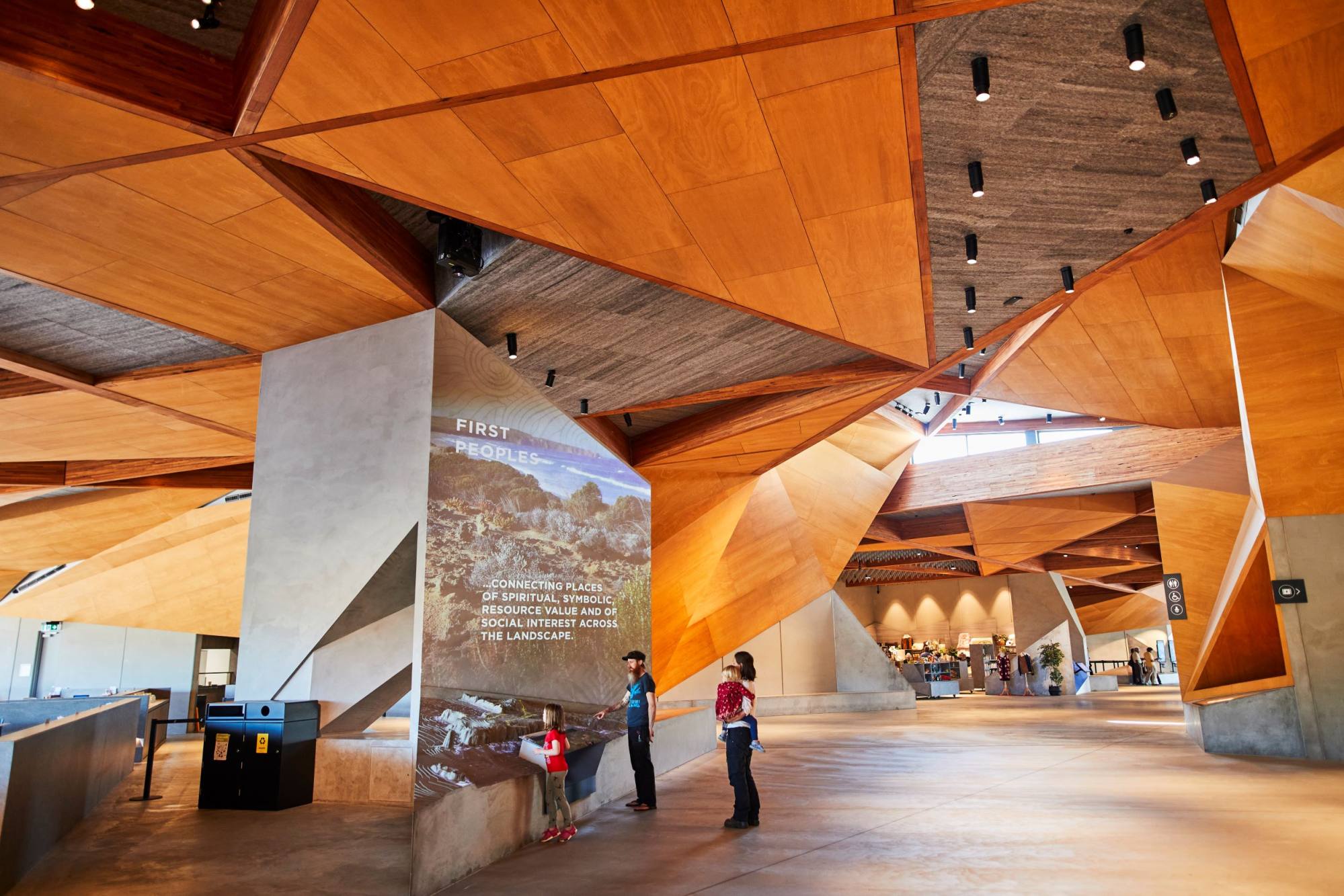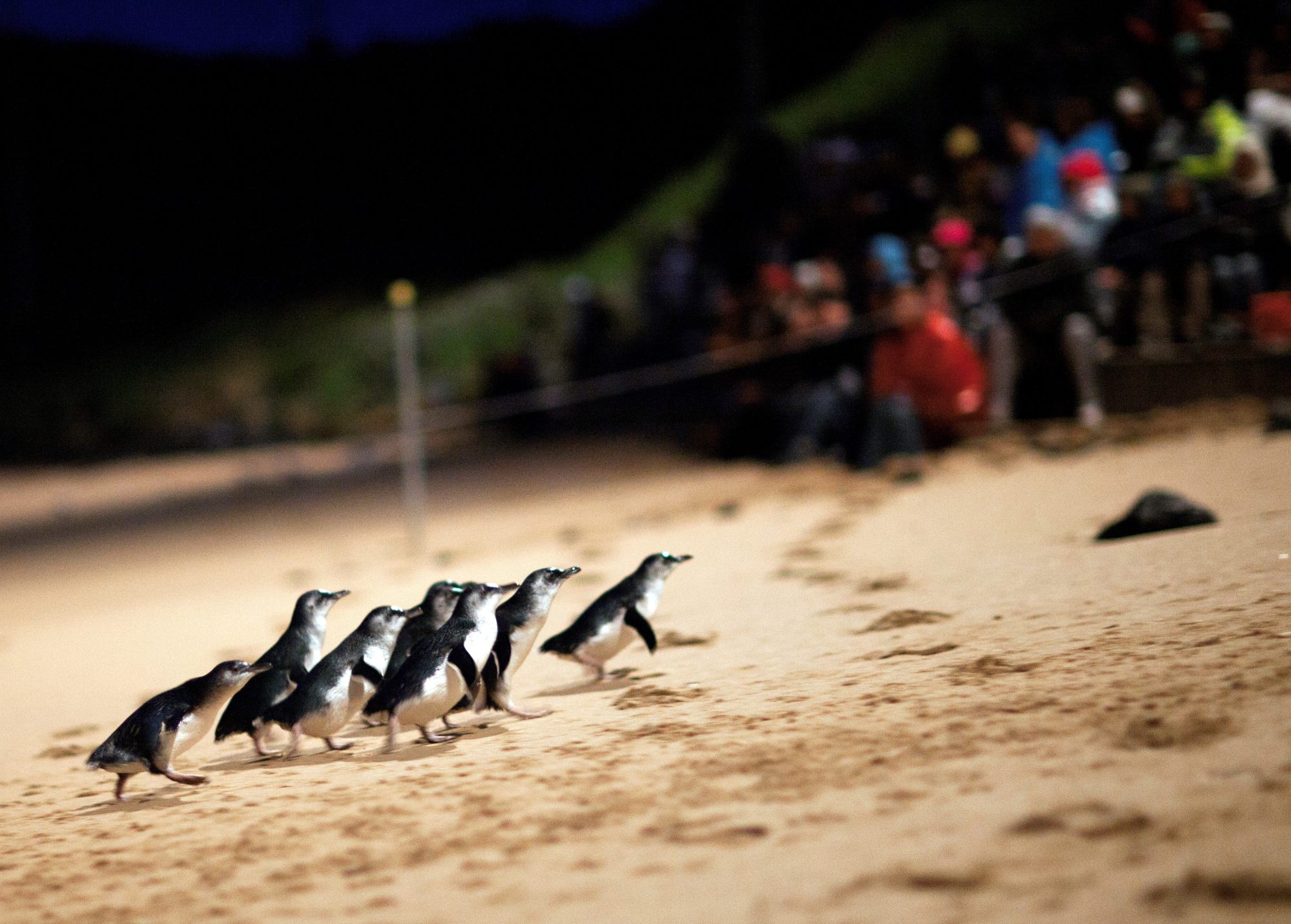
How viewing of ‘penguin parade’ on Australia’s Phillip Island puts the birds first, with secure spectator areas, low lights and ban on photos
- When nine of the 10 little penguin colonies on Phillip Island had been wiped out by the 1980s, drastic action was required to save the remaining one
- A visitor centre for watching the birds’ nightly emergence from the sea was built, with viewing areas, special lighting and a ban on photography
Seeing penguins, not in a zoo or aquarium but in their natural habitat, takes some determination; the icy wind coming off the Bass Strait reminds us on this winter night that this part of Victoria, Australia is not far from the world’s southernmost continent: Antarctica.
Of the 18 species of penguin, nine live in the Antarctic and on sub-Antarctic islands. The smallest species, however, known as little penguins and sometimes as fairy penguins, lives more conveniently along the coasts of New Zealand and southern Australia.
When not out foraging at sea, the largest colony of little penguins, around 40,000 strong, can be found on Victoria’s Phillip Island.
Every night, about 10 per cent of them emerge from the crashing surf to cross the sand as they return to their burrows in the coastal scrub; a “penguin parade” that has made the 101 sq km (39 square mile) island internationally renowned.

Some 140km (87 miles) southeast of the state capital, Melbourne, Phillip Island is also home to around 13,000 humans, who appreciate its laid-back lifestyle. Australian fur seals thrive along its rugged coastline, and migrating whales help attract more than two million visitors to the island each year.
Cross the bridge from the mainland town of San Remo and it’s a 20-minute drive across Phillip Island to the Penguin Parade Visitor Centre, on the Summerland Peninsula.
5 hidden gems around Lombok, Indonesia, Bali’s quieter neighbour
The multimillion-dollar centre has been designed to disappear into the undulating landscape when you look back towards it from viewing stands erected along the shoreline. As a result, light from the massive building doesn’t deter the penguins, which wait for the safety of darkness before they appear from the waves.
Every detail at the centre is meant to minimise human disruption to the penguins’ routine. The lengthy boardwalks leading down to the viewing stands are raised, so the flightless birds can wander underneath them.
The stands are along a stretch of sand that is at most 200 metres (650ft) wide and positioned in such a way as to allow visitors to see the penguins without obstructing their route. The general viewing stands can accommodate 3,000 people.
An underground viewing area – a bunker with windows positioned along the penguins’ path – places the birds at eye level.
Penguin Plus tickets (available through the Phillip Island Nature Parks website) grant us entry to a smaller, open-air tiered section above the underground viewing area.

More than 4,000 penguins are thought to burrow on Summerland Bay Beach and the collective anticipation rises as the light fades. Suddenly the tension is broken with delighted gasps: “There’s some!”
Dozens of penguins begin tumbling out of the inky waves, waddling across the sand like happy drunks.
They are barely a metre away as they pass below us, appearing to be chatting among themselves. Some plop down for a breather, others take a moment to preen their glistening feathers.

There’s a strong temptation to record the moment, but we can’t; photography is banned. The rangers explained why during the information session that preceded the procession, but that doesn’t stop some tourists trying to take a shot, only to be told to put their phones and cameras away.
Later, Dr Andre Chiaradia, an expert on little penguins and part of the Phillip Island Nature Parks Research and Conservation team, explains that photography was banned in the 1980s, when nine of the 10 colonies across the island had been wiped out and the prediction was that the penguin parade would vanish altogether before the year 2000.
Drastic measures were required, with the ban on photography being one of the least pressing.

“Penguins don’t have any special vision at night,” says Chiaradia. Their eyesight is similar to ours. “So if a flash goes off, in that moment the birds can lose their eyesight, can become disoriented, and they may end up in places they shouldn’t and put themselves in danger.”
Over time, emerging from the dark ocean into a wall of blinding flashes would have discouraged the penguins from following their established pathways to their burrows.
The need to protect the penguins from artificial light is also the reason the dimmed LED lamps closer to the water, illuminating the start of the parade for the paying audience, are fitted with filters that remove all blue light.

When the photography ban was implemented, the Phillip Island penguins were facing far bigger problems on land and at sea.
The construction of housing in the area was destroying natural habitat and increasing the risk of traffic accidents. In the worst incident he can recall, Chiaradia says, a single vehicle ran over almost three dozen penguins.
Pets were also an issue, as cats would prey on eggs and small chicks while dogs would kill adult penguins. Foxes, an introduced species, were an even greater threat.

“One fox would kill 20 to 30 penguins in one night,” he says.
Another problem was that industrial fishermen were taking the birds’ sustenance for cat food.
“It was death by 1,000 cuts,” says Chiaradia.
Hurricane wrecks hotel once owned by Tarzan star and John Wayne
In response, in 1985, the state government introduced the Penguin Protection Programme and began buying back homes that were too close to the burrows, removing power lines and restoring natural habitat. Foxes were eradicated.
Although tourists have always been welcome, especially because they help fund the research and conservation efforts that have restored population numbers, Chiaradia says visitor behaviour still needs to be managed, as demonstrated by those who can’t control their camera fingers, to the detriment not just of the penguins.
“You don’t go to an amazing movie and start taking pictures, because it spoils the experience for everyone,” points out Chiaradia. “It’s the same here.”
Fortunately, the Phillip Island Nature Parks website provides a wide variety of professionally shot photographs that can be downloaded free of charge.

